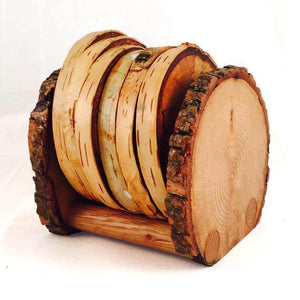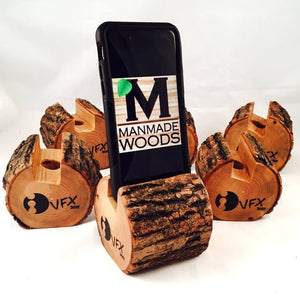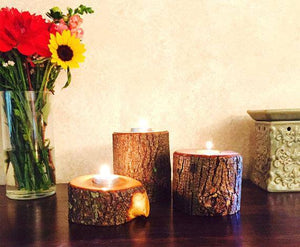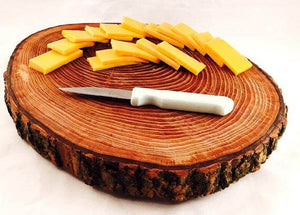Giving Life to the Old: A Journey through Creative Upcycling of Wooden Furniture
In a world where sustainability is becoming increasingly vital, the art of upcycling has emerged as a beacon of hope. It's not just about recycling; it's about transforming the old and forgotten into something new and beautiful. And what better canvas to work with than old wooden furniture? Today, we embark on a journey through the realms of creativity, exploring the myriad ways to breathe new life into those dusty relics gathering cobwebs in our attics and basements.
Imagine an old wooden chair, weathered and worn from years of neglect. But don't discard it just yet. With a bit of sandpaper and elbow grease, you can unveil its hidden beauty. Sanding down rough edges and uneven surfaces is just the beginning. Consider distressing the wood for a rustic charm or antiquing it for a touch of vintage elegance. And when it comes to painting and staining, opt for eco-friendly options to ensure your project is as sustainable as it is stylish.
Repurposing Functional Pieces
Ever thought about turning that old dresser into a statement kitchen island? Or perhaps transforming a wooden chair into a quirky plant stand? The possibilities are endless. With a dash of creativity and a sprinkle of imagination, you can repurpose old wooden furniture into functional pieces that not only serve a purpose but also add character to your space. Wooden crates can become stylish storage solutions, while outdated cabinets can find new life as bathroom vanities. It's all about thinking outside the box.
Who says old wooden furniture has to be boring? Embrace your inner artist and let your imagination run wild. There are countless ways to embellish old wooden tables, chairs, and cabinets, turning them into stunning focal points for any room. Here's a list of creative decorative upcycling ideas to inspire you:
Decoupage: Transform furniture by layering decorative paper or fabric onto surfaces and sealing it with varnish for a unique, textured look.
Stenciling: Use stencils to add intricate patterns or designs onto wooden furniture, creating a personalized touch that reflects your style.
Hand-Painted Designs: Unleash your artistic talents and paint intricate motifs, landscapes, or abstract designs directly onto wooden surfaces for a one-of-a-kind masterpiece.
Mosaic or Tile Work: Add depth and dimension to furniture by incorporating mosaic tiles or pieces of colorful tile, creating eye-catching patterns and textures.
Mixed Media Collage: Combine various materials such as wood scraps, fabric remnants, or metal accents to create a visually stunning collage effect on furniture surfaces.
Embellishments: Jazz up furniture with decorative accents like beads, buttons, or metal hardware to add whimsy and charm.
Natural Elements: Bring the outdoors in by incorporating natural elements like driftwood, stones, or shells into furniture designs for a rustic or coastal-inspired aesthetic.
With a little bit of ingenuity and creativity, you can transform drab furniture into eye-catching conversation pieces that will leave your guests in awe. So roll up your sleeves, gather your supplies, and let your imagination soar as you embark on your next upcycling adventure!
They say one man's trash is another man's treasure, and nowhere is that more evident than in the world of upcycling. Instead of discarding broken or damaged wooden furniture, why not salvage the wood and give it a new lease on life? Here are some innovative techniques for salvaging wood:
Deconstruction for Reclaimed Planks: Carefully dismantle old furniture to salvage usable wooden planks. These planks can be repurposed into various projects such as picture frames, coasters, or wall art.
Wood Turning: Utilize a lathe to turn salvaged wooden pieces into decorative objects like bowls, candle holders, or even intricate sculptures. This technique allows you to showcase the natural beauty of the wood grain in a new and captivating way.
Segmented Woodworking: Combine salvaged wood pieces with contrasting species or materials to create stunning segmented wood projects. Whether it's a cutting board, vase, or decorative box, the possibilities for unique designs are endless.
Wood Inlay and Marquetry: Embrace the art of wood inlay and marquetry to add intricate designs and patterns to salvaged wood surfaces. By carefully cutting and fitting pieces of wood together, you can create stunning visuals that elevate the aesthetic appeal of your upcycled projects.
Wood Carving: Unleash your creativity by carving intricate designs or sculptures into salvaged wooden pieces. Whether it's a detailed relief carving or a whimsical figurine, wood carving allows you to infuse personality and character into your upcycled creations.
Just remember to handle old furniture with care, ensuring that every piece of wood is salvaged safely and responsibly. With these innovative techniques, you can transform discarded wood into beautiful and functional works of art, proving that one man's trash truly can be another man's treasure!
Before you dive headfirst into your upcycling adventure, there are a few things to keep in mind. Proper cleaning and preparation of wooden furniture are essential for a successful project, as is taking safety precautions when handling tools and materials. And don't forget to source your old wooden furniture sustainably, whether it's from thrift stores, flea markets, or online marketplaces. With a little bit of planning and a whole lot of creativity, your upcycling journey is sure to be a success.
Inspect Thoroughly: Before starting any upcycling project, carefully inspect the wooden furniture for any damage, rot, or structural issues. Addressing these issues early on will save you time and effort down the line.
Clean Thoroughly: Remove any dust, grime, or old finishes from the furniture surface before beginning the upcycling process. This ensures better adhesion of paints, stains, or finishes and results in a more professional-looking final product.
Repair as Needed: If you come across any minor damages such as loose joints or scratches, take the time to repair them before proceeding with your upcycling project. This will help prolong the lifespan of the furniture and enhance its aesthetic appeal.
Use the Right Tools: Make sure you have the necessary tools for the job, including sandpaper, paintbrushes, and safety equipment like gloves and goggles. Using the right tools will make the upcycling process smoother and more efficient.
Choose Eco-Friendly Products: Opt for eco-friendly paints, stains, and finishes to minimize your environmental impact. Look for products labeled as low VOC (volatile organic compounds) or water-based, which are safer for both you and the environment.
Follow Safety Precautions: When working with power tools or chemicals, always prioritize safety. Wear protective gear such as gloves, goggles, and a mask to prevent injuries and exposure to harmful fumes.
Experiment and Have Fun: Upcycling is all about creativity and experimentation. Don't be afraid to try new techniques or designs, and don't stress about achieving perfection. Embrace the imperfections and enjoy the process of transforming old furniture into something beautiful and unique.
To truly appreciate the power of upcycling, one need only look at the incredible projects created by DIY enthusiasts around the world. From stunning before-and-after transformations to inspirational examples of creativity in action, the possibilities are endless. So why not share your own upcycling successes and challenges? Together, we can celebrate the beauty of giving new life to the old and forgotten!
As we reach the end of our journey through the world of upcycling, one thing becomes clear: the potential for creativity is limitless. By repurposing old wooden furniture, we not only reduce waste and minimize our environmental footprint but also create unique and meaningful pieces that tell a story. So why wait? It's time to roll up our sleeves, unleash our creativity, and embark on our own upcycling adventures. After all, the greatest masterpiece is yet to be created!









